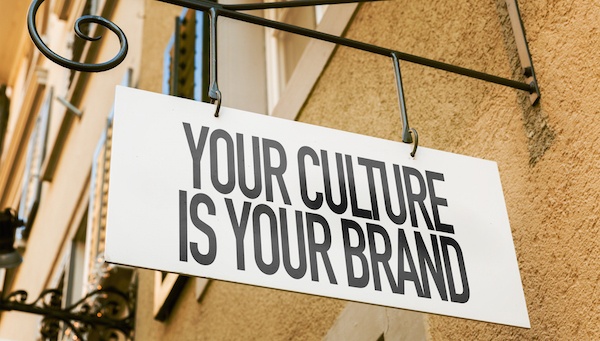When marketing your brand, one of the most important aspects to highlight goes beyond products, services or mission. Focusing on brand culture gives people something to connect with on a personal, human level. In other words, people may choose your company because it’s cool. Or inspirational. Or funny.
Yes, you also need to offer customers quality goods and service. But you’re not the only company that can do that. Most businesses are small fish in a big pond based on what they have to sell. What you have to offer that can set you apart is your unique identity, communicated to people in the ways you present information, engage with others and do business. It’s essential that you do this effectively to rise above the crowd.
The culture of a brand starts and ends with people. Customers connect with the faces they see, the voices they hear and the actions they see. Those elements can be the impetus toward choosing a company, but they can also be a reason to leave. Developing and maintaining a compelling and engaging brand culture will give you access to people in ways that will never come from simply marketing merchandise.
It All Starts With a Story
Storytelling is a huge element of marketing, tapping into the hearts of potential customers. Having a story behind your brand shows that you’re about more than making money. In fact, people might discover that your brand — and the people behind it — is something they’ve longed for in a company. Feeling a personal connection with a company, which can result directly from rich, personable storytelling, can lead to trust and brand loyalty.
 Some brands come with a built-in story. Great American Cookies, for example, started with a chocolate chip cookie recipe that had been passed down for generations. Other brands develop a story along the way. Flo, the endearing but irreverent character from Progressive, is both story and storyteller, communicating a fun, helpful insurance brand while imparting valuable information about the company’s products in non-pushy ways.
Some brands come with a built-in story. Great American Cookies, for example, started with a chocolate chip cookie recipe that had been passed down for generations. Other brands develop a story along the way. Flo, the endearing but irreverent character from Progressive, is both story and storyteller, communicating a fun, helpful insurance brand while imparting valuable information about the company’s products in non-pushy ways.
‘Show, Don’t Tell’
The storytelling aspect of marketing isn’t new. However, the Internet and social media have made the reach grow tremendously. Your company’s story isn’t confined to a brochure or a newsletter; it can be all over the web, in articles, blog posts, videos and more. The story becomes more important as the storytelling reaches more listeners — people are increasingly turning to social media sites to answer the consumer questions they previously simply typed into a Google search.
Your company’s story is told through more than statements. Just like the advice writers get to “show, don’t tell,” you can’t just tell people who and what you are. You need to show them. This is done by treating them well, by showcasing the people at the heart of your operation, by illustrating how your business operates and how it fulfills its mission, by communicating with heart and humor when making connections so they remember your company fondly, and by asking for and responding to their stories as well.
Have a Personality
Your brand’s culture can be illustrated through quirky Internet videos, charitable giving that involves the public, visual content such as fun Instagram photos, or any number of other connections. You can make people laugh, touch their hearts, give them something useful, or be surprising. It’s not about making the “right” connection; it’s about making connections that stick and doing it consistently rather than constantly jump-starting new aspects of your brand’s personality. You don’t want to be one-note, but you do want to have some degree of predictability in order to be trustworthy.
People can be both incredibly fickle and incredibly loyal. Connect with and engage them in order to gain that loyalty, and keep the stories, photos, videos and creativity going to ensure your customers stick around. Your products or services may change over time, so focusing on brand culture ensures you can stay relevant even when what you have to sell changes.






